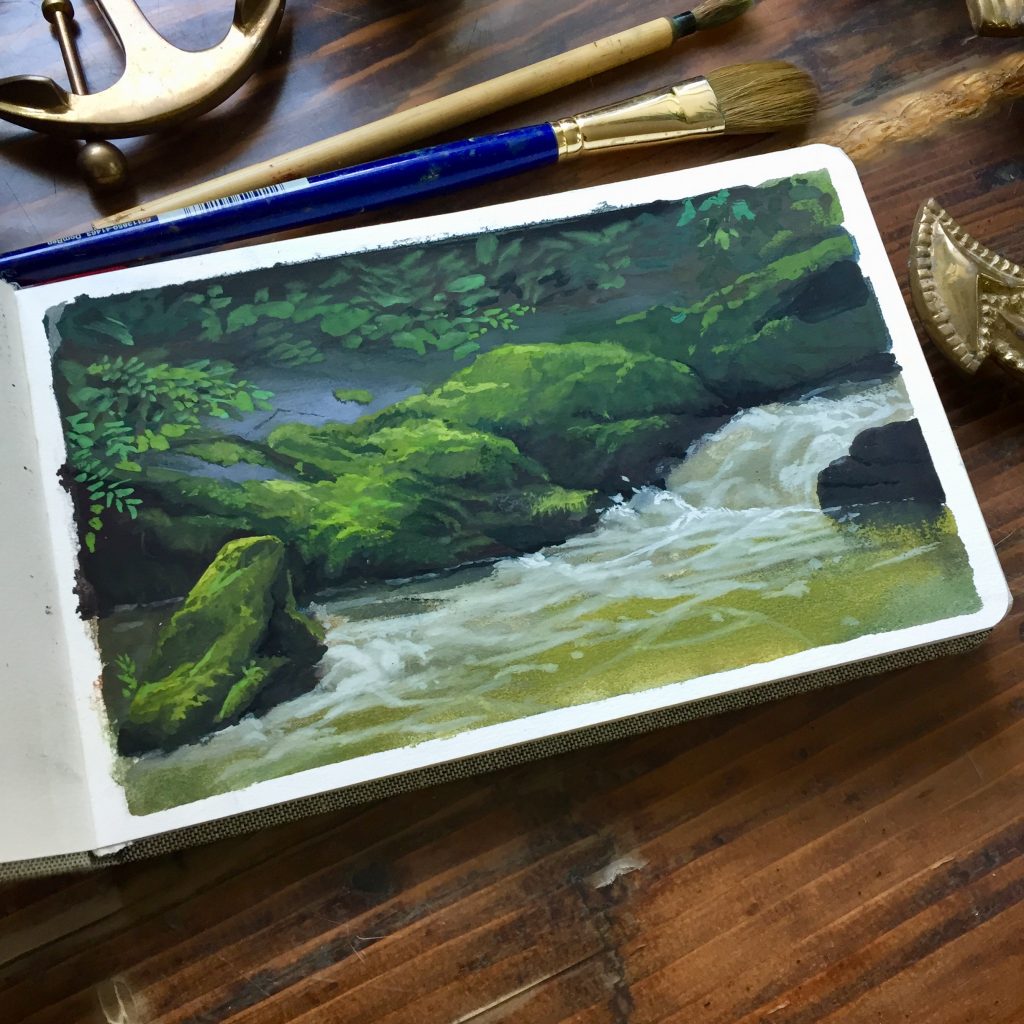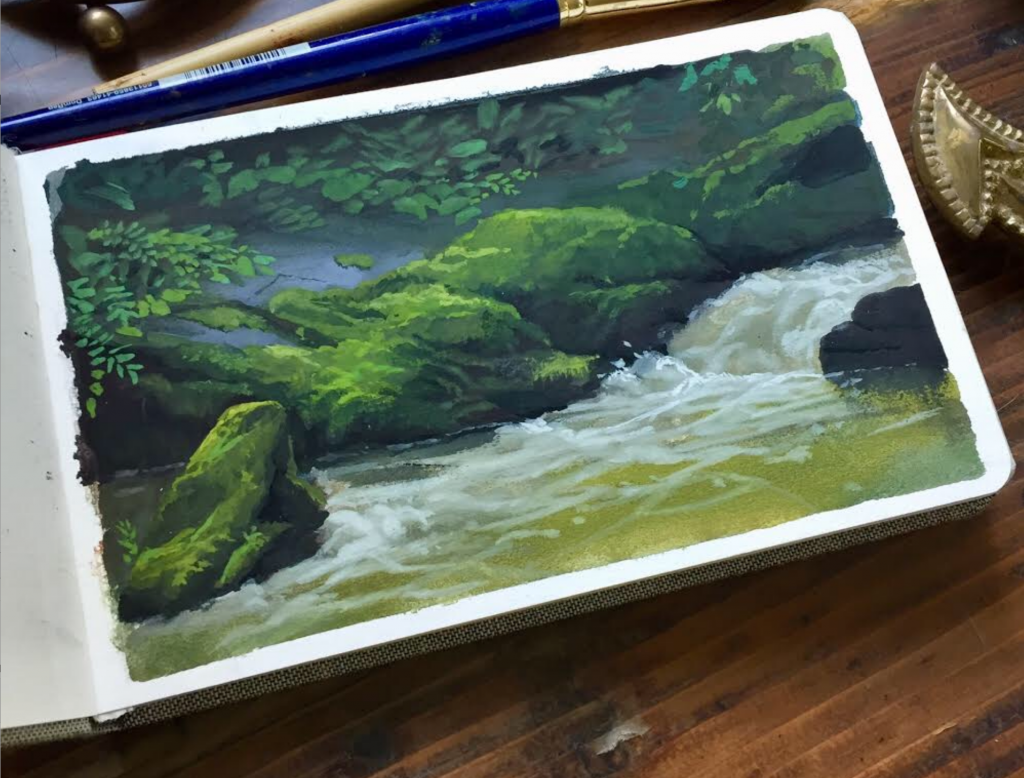Learning to paint with gouache is very confusing.
It can feel wild, unpredictable, and it dries a different value… what are you supposed to do with that?

There are a LOT of things you could focus on while learning to paint, but not qualities will help you equally. Here are my top 5 suggestions for things to focus on when learning to paint with gouache.
- Consistent painting – A lot of people struggle because they haven’t learned how to make patches of paint that are consistent. For many reasons we cant go into here, changes in value and color bring with them meaning. so the ability to put down what you intend, and have it communicate a single color and value is immensely important.
- learn to make gradients – Not every style relies heavily on blending however understanding the mechanics of how to blend and create gradients will give you the freedom you need in order to create what you want, when you want it. And we are all about creative freedom!
- wet to dry – Gouache often feels like it doesn’t do what you want because it dries as soon as you put it down. This doesn’t always have to be the case though. We can wet the paper to whatever extent we want in order to control edge quality, and blending capacity. If we deal with the whole painting from wet to dry then we have a full range of paint quality to choose from!
- keeping paint wet – The hardest thing to learn about gouache for me was the way the value changes as the paint dries. It makes mixing paint hard when the palette is wet and the paint on the surface of the painting is dry. There are a couple of ways to deal with this. You can keep you mixed paint on the palette ordered clearly so that you can judge a new puddle of paint next to an old puddle of paint to know how they will relate to each other. You can find a way to keep the paper you’re painting on from drying, that way everything is on equal terms while you paint and mix. Last of all… and master to all… Time and intention will allow you to eventually be able to predict how your paint will dry. It will happen. I promise.
- layering – Thick on thin. Wet on Dry. Paint quickly. These are some of the more basic maxims that will help you to layer effectively. Most problems occur when you are painting on top of paint that hasn’t dried yet.
If you want to learn more – Come join us over on the Gouache painting course.
Other things you should consider as you are starting your Gouache journey…
Art is full of SO MANY different skills, it is often best to limit some of the factors in order to learn things at an effective pace. So what are the different things you can limit in order to focus on what’s most important?
- Color – There is a lot of good things to be said about limiting color, but at this point – “Fewer colors to choose from means fewer choices to make”. And that means I can focus on what’s important in learning the medium. You paint almost anything you need by using the primaries (Red, Yellow, Blue) with white and black.
- Paper – Paper can be confusing, but my recommendation is to limit yourself to a 300gsm + hot or cold press paper. This will eliminate being distracted by your paper buckling excessively, and by the time your dealing with something of that thickness there are fewer bad options.
I hope you have a great start to your Gouache Painting journey!

